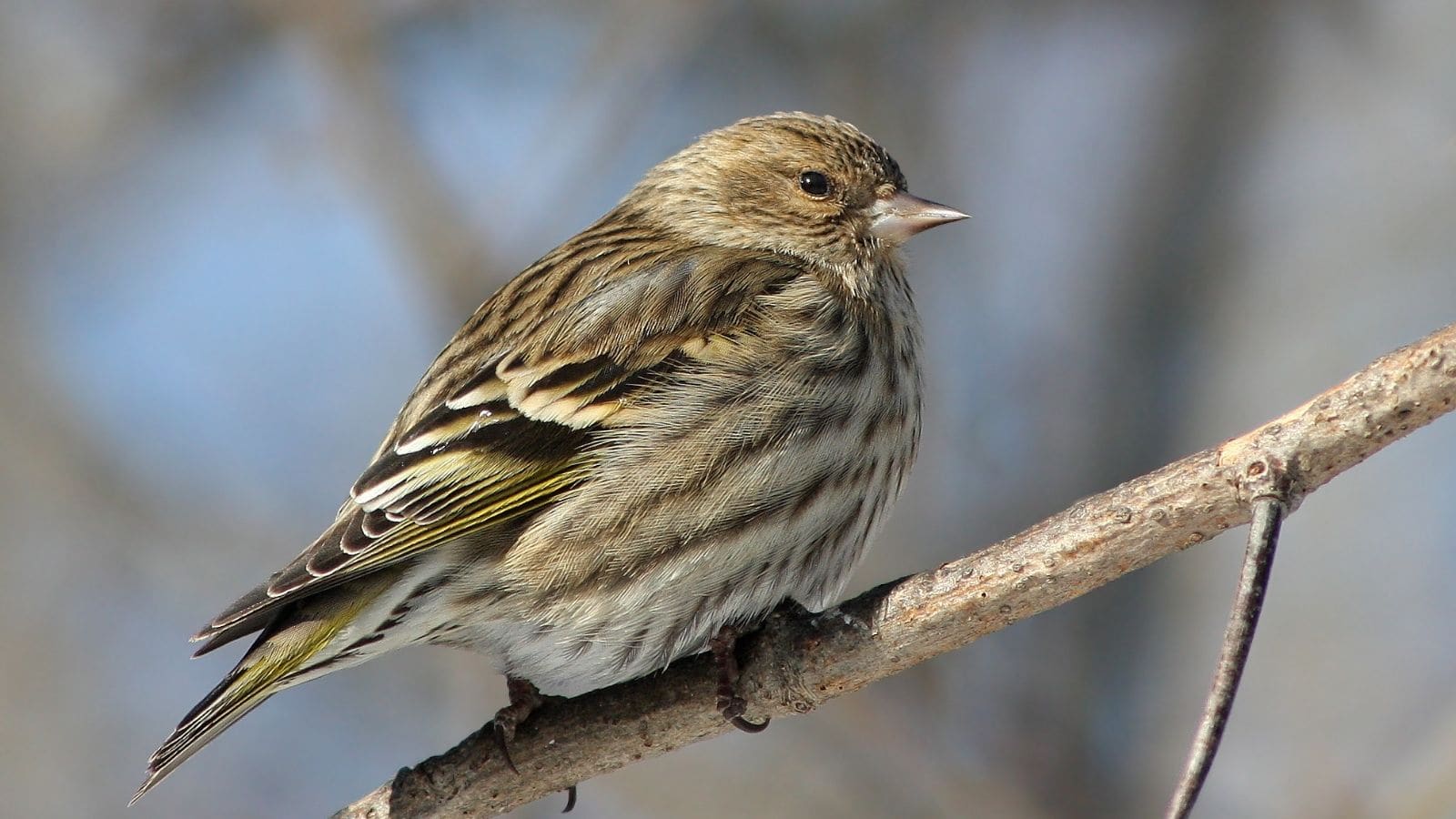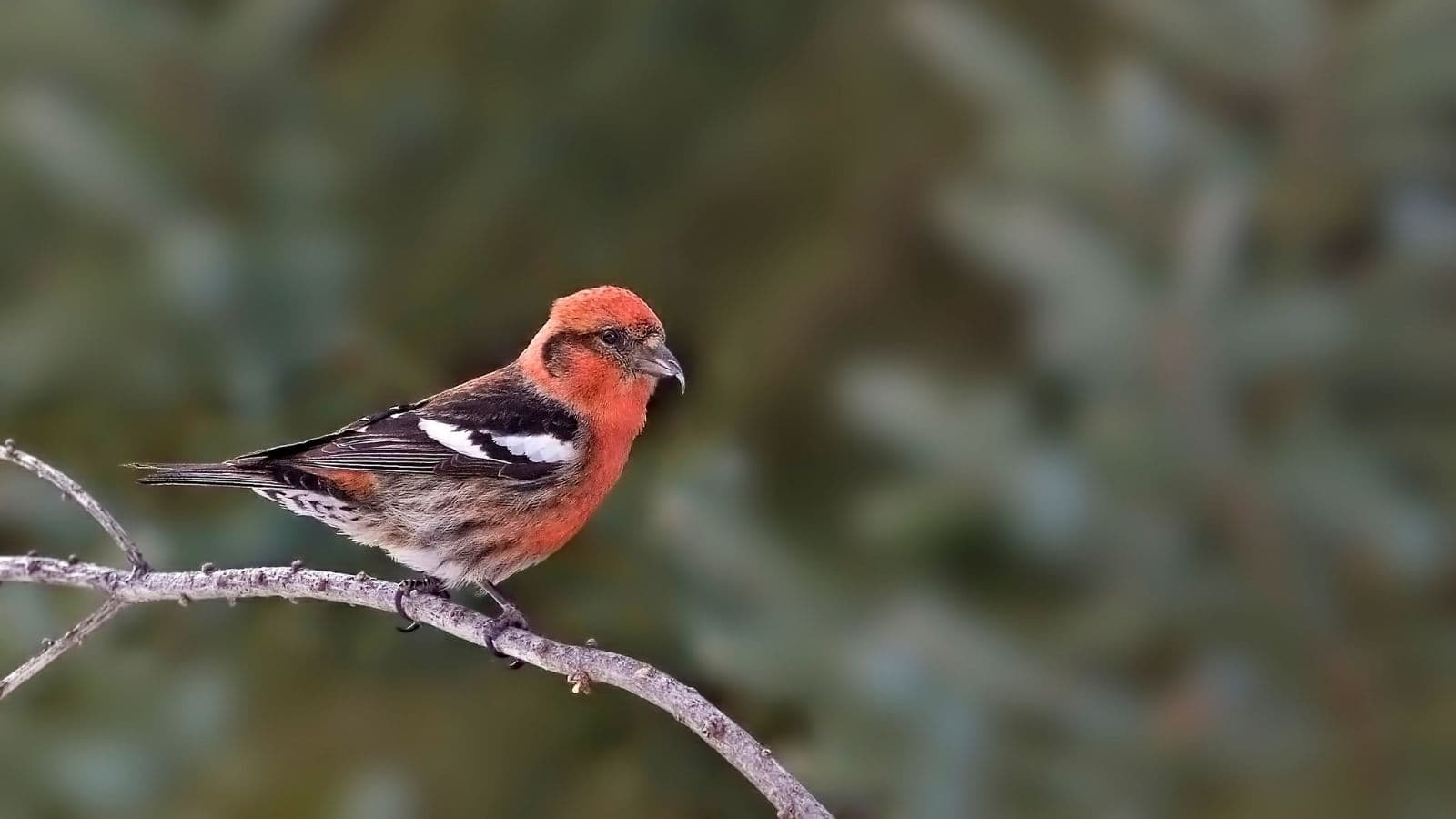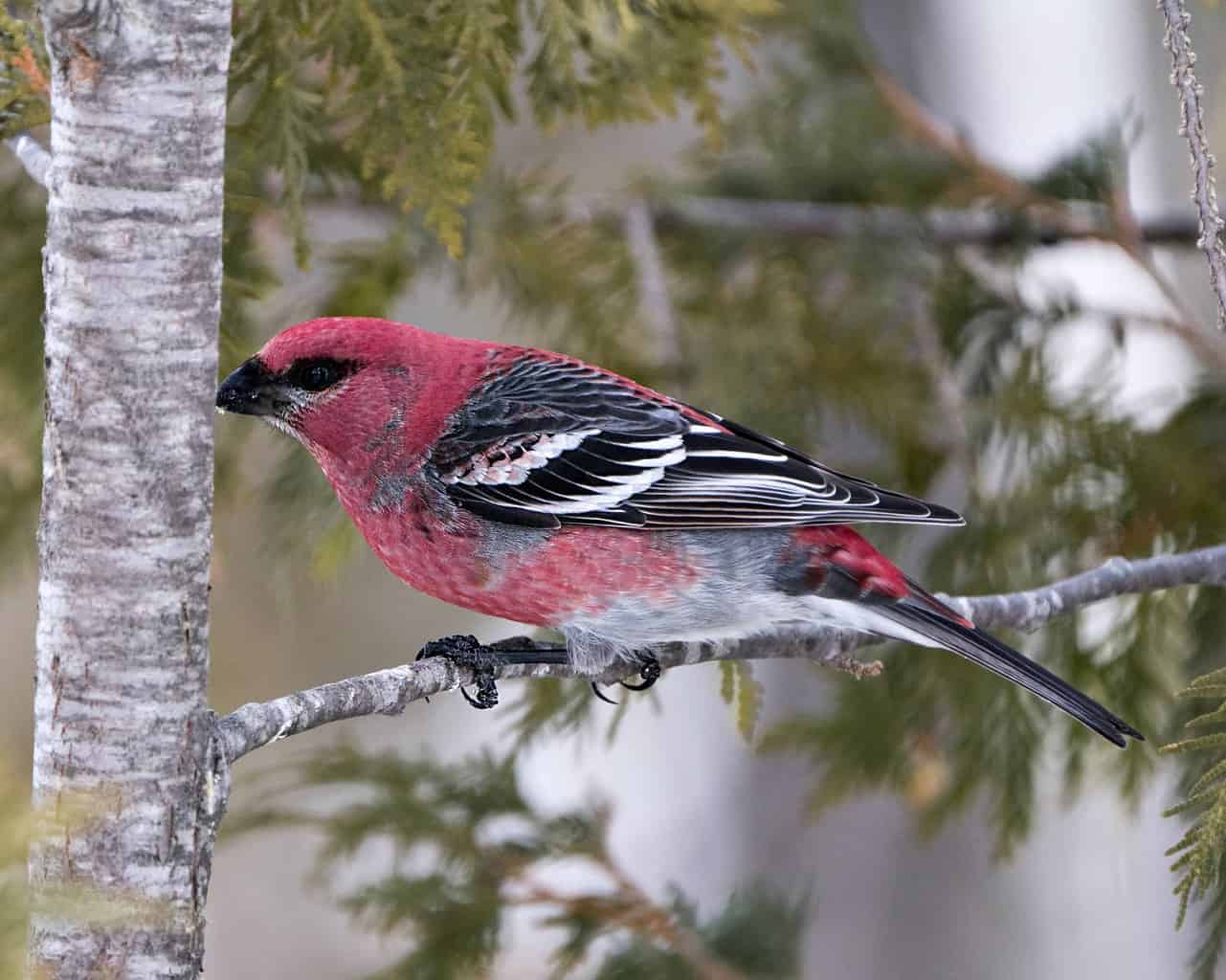The entire state of Illinois is situated in the Interior Plains region, but there’s much more to ‘The Prairie State’ than endless grasslands. Ancient wetlands and mature forests can also be found here, as well as the vast Chicago metropolitan area in the northeast.
These diverse habitats offer a wide variety of opportunities for all kinds of birds, and the state has seen 453 bird species confirmed since records began.
Finches are one of the bird families that call Illinois home, and because they’re such hardy critters, many species are seen here more frequently in winter than in summer.
That means that finches are some of the most familiar visitors to backyard feeders during the colder months, and residents of the Midwest can delight in watching a wide variety of them feed at their platform feeders and tube feeders.
Here we’ll explore some fascinating characteristics of Illinois’s finches, and learn where and when you can see them. It would take an avid birdwatcher to name all finches in the state by heart, but why not see how many you can guess before scrolling down?
Finches in Illinois, Starting With the Most Common
American Goldfinch

- Scientific Name: Spinus tristis
- Length: 4.3-5.1 in (11-13 cm)
- Weight: 0.4-0.7 oz (11-20 g)
- Wingspan: 7.5-8.7 in (19-22 cm)
There are three types of goldfinch in North America, but by far the most well-known and widespread is the American goldfinch.
Not only are these birds the most frequently seen finch in Illinois, but they’re also the most common finch in North America. They’re seen by almost half of all bird watchers here during the summer months, and by around one in four during the winter.
Males display especially prominent gold colors between March to October to win the charm of the females. They build their nests among saplings and bushes and raise four to six young in each brood.
A regular visitor to backyard feeders, American goldfinches will lap up sunflower seeds, sorghum, millet, canary seed, and cracked nutmeats. Their favorite seed of all may well be thistle, or ‘nyjer’ seeds, which you can offer them in specialized nyjer feeders.
House Finch

- • Scientific Name: Haemorhous mexicanus
- • Length: 5.1-5.5 in (13-14 cm)
- • Weight: 0.6-0.9 oz (16-27 g)
- • Wingspan: 7.9-9.8 in (20-25 cm)
The second most common finch in Illinois, the house finch is now seen by nearly one in five birdwatchers throughout the year. But their presence here is a relatively recent phenomenon.
For thousands of years, house finches resided purely in Mexico and Western parts of the United States. That all changed in the 1940s when caged birds dubbed ‘Hollywood finches’ were released in New York City.
They soon spread, and a distribution map from the early 80s already shows house finches spreading into parts of Illinois. Sadly, their success here has displaced some native species such as the declining purple finch.
House finches are so-called because they often flock and nest near residential buildings. There will nearly always be a few showing up at platform feeders and tube feeders in the colder months, and they love to wash in bird baths, too.
Pine Siskin

- Scientific Name: Spinus Pinus
- Length: 4.3-5.5 in (11-14 cm)
- Weight: 0.4-0.6 oz (12-18 g)
- Wingspan: 7.1-8.7 in (18-22 cm)
Whereas our first two types of finch are common in Illinois year-round, many other finches have a more nomadic lifestyle. The pine siskin travels far and wide in search of food and is much more commonly seen here during the colder months than in summer.
But while winter bird watcher records see this bird averaging on 3% of reports, their presence largely depends on the abundance of tree seeds that they feed on. In barren years they may be few and far between, whereas in good years they can form huge flocks.
Pine siskins often flock with American goldfinches, which they can be confused with during wintertime. Their mechanical song is much less musical than that species, though, so learning it by heart is a good way to recognize their presence.
Like goldfinches, pine siskins will feed greedily on thistle seeds, so hanging a thistle feeder is a great way to attract them to your home.
Purple Finch

- Scientific Name: Haemorhous purpureus
- Length: 4.7-6.3 in (12-16 cm)
- Weight: 0.6-1.1 oz (18-32 g)
- Wingspan: 8.7-10.2 in (22-26 cm)
While male purple finches are covered in a reddish-rose wash, females are streaky brown. While they’re certainly not purple, purple finches are still extremely attractive birds that display bright plumage not only in the breeding season but in winter, too.
This is good news for Illinois residents since the purple finch is seen four times more often here during the winter than in summer. Generally seen in small flocks foraging for fruits, seeds, and insects, they’re also regular visitors to bird feeders during the colder months.
Sadly, purple finches have been declining for decades, and were once more common in the Midwest than they are now. While habitat loss is partly to blame for their demise, the introduction of the house finch has further weakened their grip on former territories.
Some scientific studies have revealed that they’re outcompeted in 95% of interactions with house finches, so their numbers may continue to fall unless former habitats are restored.
Common Redpoll

- Scientific Name: Acanthis flammea
- Length: 4.7-5.5 in (12-14 cm)
- Weight: 0.4-0.7 oz (11-20 g)
- Wingspan: 7.5-8.7 in (19-22 cm)
Common redpolls are one of the most cosmopolitan finch species in the world. Not only are they found throughout the northern half of North America, but in Greenland, Iceland, Northern Asia, and Europe, too!
But while these finches are extremely widespread, they’re only locally common when food sources support their flocks. Their favorite foods include birch catkins and weed seeds, but they’ll sometimes visit backyard feeders, too.
The northern third of Illinois lies at the southern end of the common redpoll’s regular winter range, although they can occasionally be seen in southerly parts of the state when flocks fail to find enough food further north.
These northerly birds have an incredible tolerance to cold and during scientific studies have survived temperatures of -65°F without perishing! A useful adaptation for a bird that overwinters as far north as Alaska.
White-Winged Crossbill

- Scientific Name: Loxia leucoptera
- Length: 5.9-6.7 in (15-17 cm)
- Weight: 0.8-0.9 oz (24-26 g)
- Wingspan: 10.2-11.0 in (26-28 cm)
White-winged crossbills are slightly more common than their better-known cousin the red crossbill in Illinois. They’re ticked off on around 1 in 300 bird-watching reports here during winter and have even been spotted in summer, too.
White-winged crossbills spend almost their entire lives in coniferous forests, searching for the seeds of spruce, fir, hemlock, and pine, but will sometimes also eat fruits of deciduous trees like mountain ash.
Crossbills start their lives with a bill that meets at the tips, but by the time they fledge the nest, their bills have already become crossed, a special adaptation that allows them to open conifer cones that other birds can’t get into.
Both species of crossbill are remarkably tame and may allow you to approach and take photos of their playful feeding behavior.
Red Crossbill

- Scientific Name: Loxia curvirostra
- Length: 5.5-6.5 in (14-17 cm)
- Weight: 1.4 oz (40 g)
- Wingspan: 10-10.75 in (25-27 cm)
A close cousin of the white-winged crossbill is the red crossbill. While their cousins have an extensive range, red crossbills have the largest of any bird on our list.
Seen from Mexico to Greenland, from Siberia to Southeast Asia, red or ‘common crossbills’ are truly international birds that travel wherever conifer forests can serve up enough food to sustain them.
Another curious crossbill characteristic is the way they can breed at any time of the year. Even if it’s the middle of winter, these hardy birds will build their nests anywhere there’s an abundant source of conifer seeds to raise their young on!
Red crossbills are a rare species of finch in Illinois, only seen by around one in a thousand birdwatchers here, usually during winter.
Evening Grosbeak

- Scientific Name: Hesperiphona vespertina
- Length: 16 to 22 cm (6.3 to 8.7 in)
- Weight: 38.7 to 86.1 g (1.37 to 3.04 oz)
- Wingspan: 30 to 36 cm (12 to 14 in)
Another impressive wandering finch, the evening grosbeak is only spotted by an average of 0.1% of birdwatchers in Illinois during the winter, and even less than that during the summer months.
This makes it one of those elusive birds that’s incredibly exciting to spot and recognize. A glimpse of its huge bill and distinctive bright yellow ring around its crown will immediately make a seasoned bird watcher’s heart pulse as they identify this species that rarely shows up this far south.
Evening grosbeaks are more common in northerly regions and in mountains where they move through forests in search of seeds. Their bill is so strong that it can crack open seeds that other birds can’t get into, allowing them to make use of the leftovers from smaller finches.
One of the largest finches in North America, the Evening grosbeak is only slightly smaller than a European starling. They tend to travel in tight flocks in search of food, so if you do see one, there are probably several more around, too!
Hoary Redpoll

- Scientific Name: Acanthis hornemanni
- Length: 4.7-5.5 in (12-14 cm)
- Weight: 0.4-0.7 oz (11-20 g)
- Wingspan: 8.5-9.25 in (22-23 cm)
If you thought that the common redpoll was a hardy bird, wait until you hear about their cousin! Also known as the ‘arctic redpoll’, the hoary redpoll’s alternative name gives an apt description of this bird’s extreme range.
Indeed, hoary redpolls have one of the most northerly distributions of any small bird on Earth, and can sometimes even spend the entire winter within the Arctic Circle! Many birds will live their entire lives without venturing anywhere near human habitation.
This other-worldly bird very rarely visits the United States, except in ‘irruption years’ when food is scarce in the north. They join flocks of common redpolls and may even turn up at bird feeders.
The two species are very difficult to tell apart, but hoary redpolls tend to be fluffier than their relatives, for understandable reasons! Because they’ve rarely encountered people throughout their evolution, hoary redpolls can be extremely tame, even landing on people on odd occasions!
Pine Grosbeak

- Scientific Name: Pinicola enucleator
- Length: 7.9-9.8 in (20-25 cm)
- Weight: 2.01 oz (57 g)
- Wingspan: 13.0 in (33 cm)
The rarest of Illinois’s finches is also the largest.
More similar in proportion to a red-winged blackbird than to other finches, the pine grosbeak is a formidable forest bird that will occasionally visit backyards and orchards for feeding opportunities.
In summer, pine grosbeaks are busy nesting and feeding their young in either high-altitude or northern boreal forests. It’s only in winter that they travel to midwestern states like Illinois if food sources are particularly scarce further north.
Pine grosbeaks will typically only show up in Illinois once in a blue moon, but when they do, expect to see tightly packed flocks, eagerly seeking out crab apple trees, berry bushes, and backyard feeders to fill up at.
Wait, What About…
If you’re wondering why the rose-breasted grosbeak or ‘cut-throat’ didn’t show up on our list, that’s because they’re not really true finches at all!
Although they share the same ‘grosbeak’ common name as some true finches, rose-breasted grosbeaks (Pheucticus ludovicianus) are, in fact, part of the cardinal family.
These striking birds are very common in Illinois’s summers, though, showing up on around 15% of checklists during the breeding season. They mostly migrate to Central America for winter.
Wrap Up
Illinois has a rich array of finch life. Whether you’re in Chicago watching American goldfinches clean up a platform feeder or in a conifer forest searching for nomadic finches on a cold winter’s day, The Prairie State offers plenty of great chances to witness these amazing birds.
If you’ve been bird watching in Illinois, chances are you’ve also come across some of the state’s wrens. Because they’re extremely rewarding birds to get to know better, we’ve made a guide to all 7 wren species in Illinois, here.

